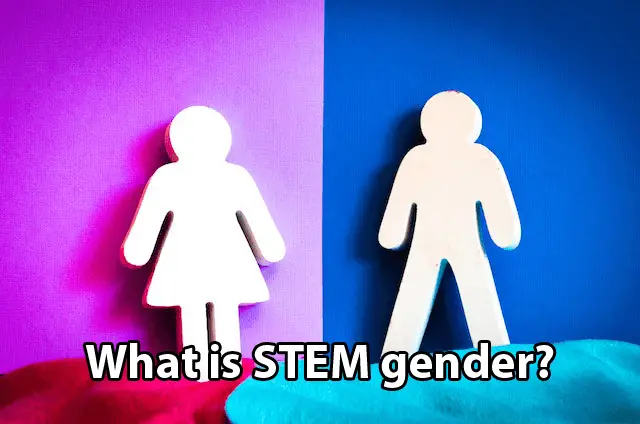
The gender gap in STEM fields
In today’s society, there continues to be a significant gender gap in the fields of science, technology, engineering, and mathematics (STEM). Despite efforts to promote gender equality, women are still underrepresented in these industries. Research has shown that this gender gap is influenced by various factors that hinder girls’ interest and participation in STEM fields.
One key factor contributing to the gender gap in STEM is the existence of stereotypes and societal expectations. Society often portrays STEM fields as being more suitable for men, while women are expected to pursue careers in fields such as teaching or nursing. These stereotypes can discourage girls from exploring their interests and pursuing careers in STEM, leading to a lack of diversity in these industries.
Stereotypes and societal expectations
Stereotypes and societal expectations can play a significant role in discouraging girls from pursuing STEM fields. From an early age, girls are often bombarded with messages that suggest STEM subjects are more suited for boys. Society propagates the idea that girls are naturally inclined toward more “feminine” interests such as arts, literature, or caregiving professions. This perpetuates the notion that girls lack the aptitude or interest in pursuing subjects that require logical and analytical thinking. Consequently, many girls internalize these stereotypes and feel discouraged from exploring their passion for STEM.
Moreover, societal expectations also influence the career choices girls make in their pursuit of higher education. Many external factors, such as parental pressure, peer influence, and media portrayal, shape girls’ perceptions of what is acceptable and preferred in terms of career paths. These expectations often push girls away from STEM fields and direct them towards more traditional female-dominated professions. Society’s rigid gender roles can limit girls’ options, hinder their potential, and prevent them from pursuing STEM careers that may align better with their interests and capabilities.
Lack of representation and role models
One significant factor contributing to the gender gap in STEM fields is the lack of representation and role models for girls and women. When young girls do not see female scientists, engineers, or mathematicians who look like them in positions of authority and success, it can be difficult for them to envision themselves pursuing careers in these fields. This lack of representation perpetuates the notion that STEM is a male-dominated domain, making it less likely for girls to believe that they can be successful or find fulfillment in STEM careers.
Without role models who have faced similar challenges and overcome them, girls may feel discouraged or uncertain about their abilities in STEM. Seeing successful women in these fields not only provides inspiration but also serves as living proof that gender does not determine one’s capabilities in science, technology, engineering, and mathematics. By providing more visible role models who are relatable and diverse, we can begin to break down the barriers that prevent girls from pursuing STEM fields and empower them to see themselves as future leaders and innovators in these disciplines.
Limited exposure to STEM opportunities
Limited exposure to STEM opportunities is a significant factor contributing to the gender gap in these fields. Young girls often lack access to resources and programs that expose them to the various disciplines within STEM. This limited exposure can result in a lack of awareness and understanding of the potential career paths available in these fields, leading to a lack of interest or consideration of STEM as a viable option for girls. Without early exposure to STEM opportunities, girls may miss out on the chance to develop a passion for these fields and may be deterred from pursuing further education or careers in STEM.
Furthermore, limited exposure to STEM opportunities can also stem from societal biases and gender stereotypes that dictate what activities are considered appropriate for girls. Girls may be steered towards more traditionally “feminine” interests and activities, such as arts or humanities, and may not have equal access to opportunities in STEM fields. This unequal exposure can perpetuate the notion that STEM is not a suitable path for girls, discouraging them from pursuing their interests and talents in these areas. Overall, addressing the issue of limited exposure to STEM opportunities is crucial in breaking down barriers and encouraging more girls to explore and pursue careers in STEM.
Gender bias and discrimination
Gender bias and discrimination continue to persist in STEM fields, creating significant barriers for women. Research has consistently shown that women face inherent biases and prejudice in the workplace, leading to unequal opportunities for career advancement and lower pay compared to their male counterparts. Studies have also highlighted the presence of implicit biases, where gender stereotypes and prejudices influence decision-making processes, hindering the progression of women in STEM. These biases often result in women being overlooked for promotions, leadership positions, and important projects, contributing to the underrepresentation of women in STEM industries.
Moreover, gender discrimination can be observed throughout the educational pipeline, starting from early childhood experiences through higher education. Teachers and parents often unknowingly perpetuate gender stereotypes by encouraging boys towards math and science-related activities while discouraging girls or directing them towards more ‘feminine’ pursuits. These biases contribute to societal expectations that discourage girls from pursuing STEM fields, ultimately leading to a smaller pool of female talent in these areas. The prevalence of gender discrimination in educational settings reinforces the idea that STEM is a male-dominated field, further discouraging girls and reinforcing the gender gap.
Educational environment and curriculum
The educational environment and curriculum play a significant role in perpetuating the gender gap in STEM fields. Often, the classroom environment is not inclusive or supportive of girls’ interests and abilities in science, technology, engineering, and mathematics. Teachers may unknowingly reinforce gender stereotypes by assuming that boys are naturally more inclined towards these subjects, while girls are better suited for other areas.
Additionally, the curriculum itself may not adequately address the diverse needs and interests of both male and female students. It is essential for educators to challenge traditional gender roles and ensure that the content is relevant and engaging for all students. This can be achieved through incorporating real-world examples, hands-on activities, and encouraging collaborative learning. By creating an educational environment that promotes inclusivity and challenges gender biases, we can encourage girls to pursue STEM fields and bridge the gender gap.
Cultural and parental influences
Cultural and parental influences play a significant role in shaping a child’s interests, career choices, and beliefs about gender roles. In many cultures, there is still a prevailing belief that STEM fields are more suitable for boys, while girls are encouraged to pursue careers in fields related to arts or humanities. This deeply ingrained gender stereotype can limit girls’ exposure and interest in STEM subjects from an early age. Moreover, parents may unintentionally reinforce these stereotypes by providing their children with toys, books, and educational activities that align with traditional gender roles, further perpetuating the notion that STEM is a male-dominated domain.
The lack of representation and encouragement from family members can also have a lasting impact on girls’ confidence and belief in their abilities in STEM. When parents do not actively support and encourage their daughters’ interests in science, technology, engineering, and math, they inadvertently discourage them from pursuing these fields. Girls may internalize the message that their gender makes them less capable or interested in STEM, leading to self-doubt and decreased motivation to explore these subjects further. The absence of parental guidance and encouragement can leave girls feeling isolated and unsupported, hindering their potential to excel in STEM careers.
Confidence and self-esteem issues
Confidence and self-esteem play a significant role in a person’s pursuit of a career in STEM fields. Often, girls may face lower levels of confidence and self-esteem, which can hinder their desire to excel in these areas. Society has long perpetuated the notion that girls are not as capable or skilled in STEM subjects as their male counterparts. These negative stereotypes can erode confidence and self-esteem, making girls doubt their own abilities and potential for success in STEM fields.
Moreover, a lack of representation and role models further contributes to confidence and self-esteem issues in girls considering STEM careers. When girls do not see women who look like them succeeding in these fields, they may question whether they belong or have the necessary skills to thrive. This lack of representation can reinforce feelings of self-doubt and increase the pressure to conform to societal expectations that suggest girls should pursue more traditionally “feminine” career paths. Additionally, limited exposure to successful female STEM professionals and mentors may prevent girls from envisioning themselves as future leaders in these fields, further impacting their confidence and self-esteem.
Perceived lack of creativity in STEM fields
STEM fields, which encompass science, technology, engineering, and mathematics, have long been associated with logical thinking and problem-solving skills. However, there is a common perception that these fields lack creativity. The idea that STEM disciplines are solely focused on facts, theories, and equations often discourages girls from pursuing careers in these fields. Many young girls who possess artistic and imaginative abilities may feel that their creative talents are incompatible with the perceived rigidity of STEM subjects. Consequently, this perceived lack of creativity might contribute to the underrepresentation of girls in STEM fields.
The perception of a lack of creativity in STEM disciplines is not only limiting but also misleading. In reality, creativity plays a crucial role in scientific exploration and technological advancements. Many breakthroughs in STEM fields have been driven by innovative and imaginative thinking. From designing cutting-edge technologies to developing new medical treatments, creativity is essential for pushing the boundaries of knowledge and solving complex problems. However, the limited portrayal of these creative aspects within STEM education and careers perpetuates the belief that creativity is not valued or encouraged in these fields. This misconception must be challenged in order to inspire and empower more girls to pursue their passions in STEM while embracing their creative abilities.
The importance of encouraging and supporting girls in STEM
In order to bridge the gender gap in STEM fields, it is essential that we place a strong emphasis on encouraging and supporting girls to pursue these disciplines. By actively promoting and providing opportunities for girls to explore and engage with STEM subjects, we can not only address the underrepresentation of women in these fields but also harness the diverse perspectives and talents that women bring to the table.
One key aspect of encouraging girls in STEM involves challenging and debunking stereotypes and societal expectations that may discourage their interest or belief in their ability to succeed in these fields. By highlighting the achievements of female scientists, engineers, and mathematicians, we can showcase numerous role models who have shattered stereotypes and excelled in their respective careers. It is crucial to emphasize that anyone, regardless of gender, has the potential to excel in STEM as long as they receive the necessary support and opportunities. Moreover, we need to create inclusive educational environments that foster curiosity, critical thinking, and creativity, enabling girls to develop a passion and confidence in their abilities to tackle complex scientific problems.


















